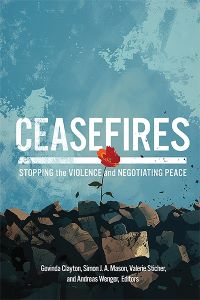Ceasefires - Stopping the Violence and Negotiating Peace

Author(s): Govinda Clayton, Simon J. A. Mason, Valerie Sticher, Andreas Wenger, Alvaro de Soto, Owen Frazer, Christopher R. Hill, Claudia Wiehler, Col. Mbaye Faye, Eemeli Isoaho, Miriam Coronel-Ferrer, Alma Evangelista, Malin Åkebo, Jeremy Brickhill, Georg Stein, Laurie Nathan, Allard Duursma, Juanita Millán Hernández, Enzo Nussio, Carsten Wieland, Sara Hellmüller, Anonymous, Cate Buchanan
Editor(s): Govinda Clayton, Simon J. A. Mason, Valerie Sticher, Andreas Wenger
Publisher(s): Georgetown University Press
Publication Year: 2025